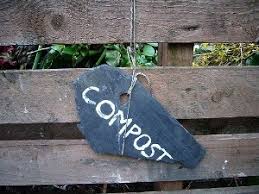– Herbivore pets that eat only plants generate poop and bedding that are easily composted without concern for pathogens. The quantity of bedding is often much greater than the amount of manure and needs to be supplemented with household food scraps. A little research, and a little trial and error, will help you get the recipe right.
– Dog and cat manure might contain hard-to-kill pathogens that pose serious health risks. Don’t use do-it-yourself finished dog or cat compost on vegetable gardens or near fruit trees. Harvested edibles could fall and become contaminated through direct contact with the soil. Even thorough washing may not remove harmful residue.
– Keep in-ground pet waste septic systems and burial trenches away from house foundations, tree roots, ground and surface water.
– All decomposition grinds to a stop when temperatures drop below 40 degrees F. Bury in-ground septic systems below frost line for your area. Adding a PVC pipe entry at the top will allow you to bury containers deeper.
– When you recycle pet waste, don’t include bags. Even certified compostable and paper bags will degrade in a timely way only at a commercial composting facility. Bags will slow down or stop the back yard recycling processes. Bags identified as “biodegradable” leave plastic bits in the soil. Best to use a scooper and deposit loose pet poo into a backyard composter. Some people use newspaper to pick up dog poop. The newspaper can then be composted along with the poop.
– If asked, municipal water treatment plants often discourage flushing dog waste. But many water control experts including those at the Mid-Atlantic Regional Council flushing https://cfpub.epa.gov/npstbx/files/KSMO_PetWaste.pdf and the Salt Lake City County Storm Water Coalition have endorsed flushing pet waste. https://cfpub.epa.gov/npstbx/files/slc_petwaste.pdf encourage flushing.
– To avoid clogged plumbing, don’t flush waste-filled bags unless the bags are specified as “flushable” (usually alcohol-based film). Limit the quantity of loose dog waste you flush to avoid toilet back-ups.
– Don’t flush pet waste into an underground household septic tank. Hair in the waste could cause outflow problems.
– Don’t flush or bury cat waste near natural water sources where runoff can pollute. Poop of outdoor cats that like to feast on rodents might contain Toxoplasma gondii, a disease agent affecting water mammals.



